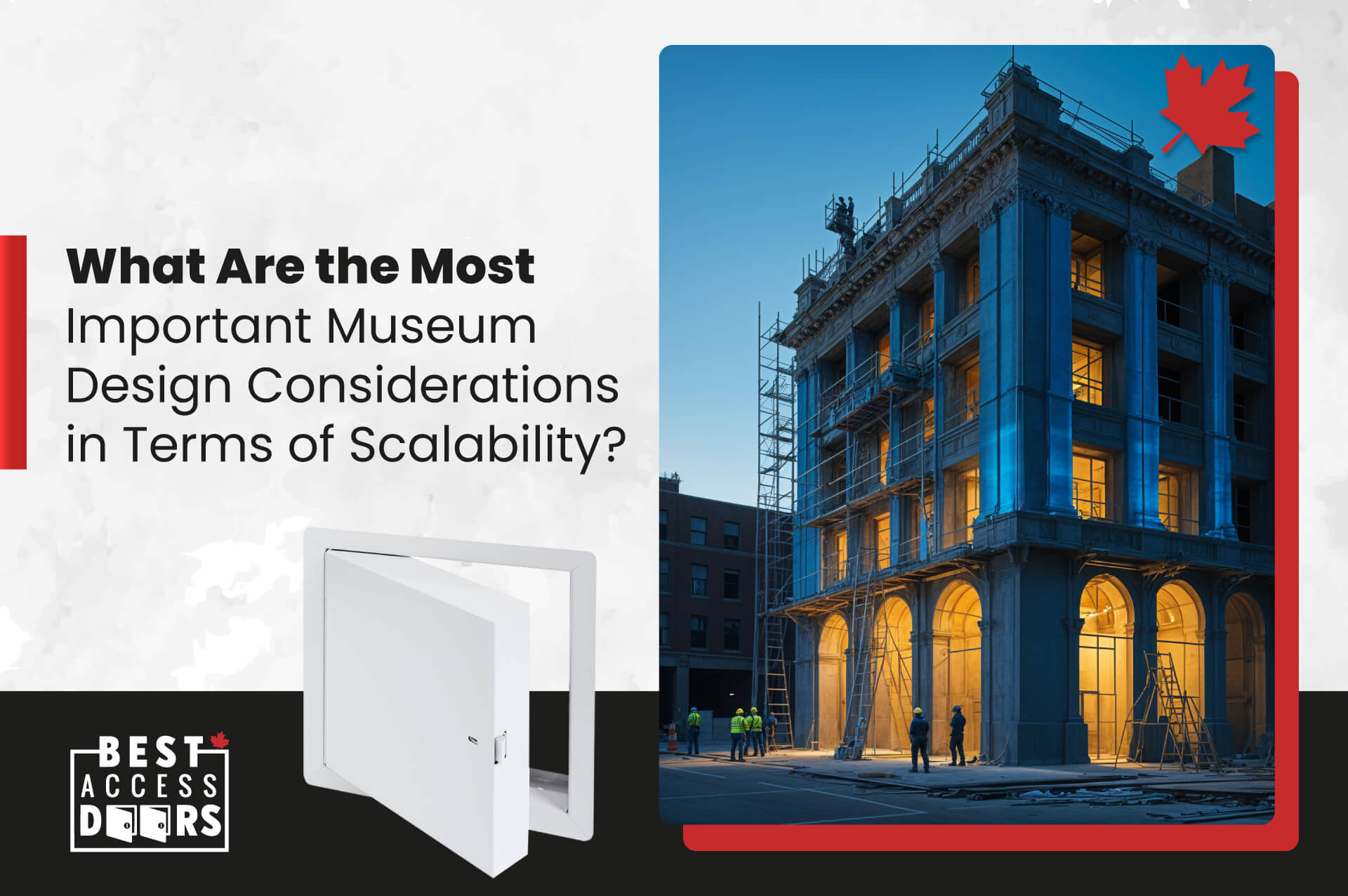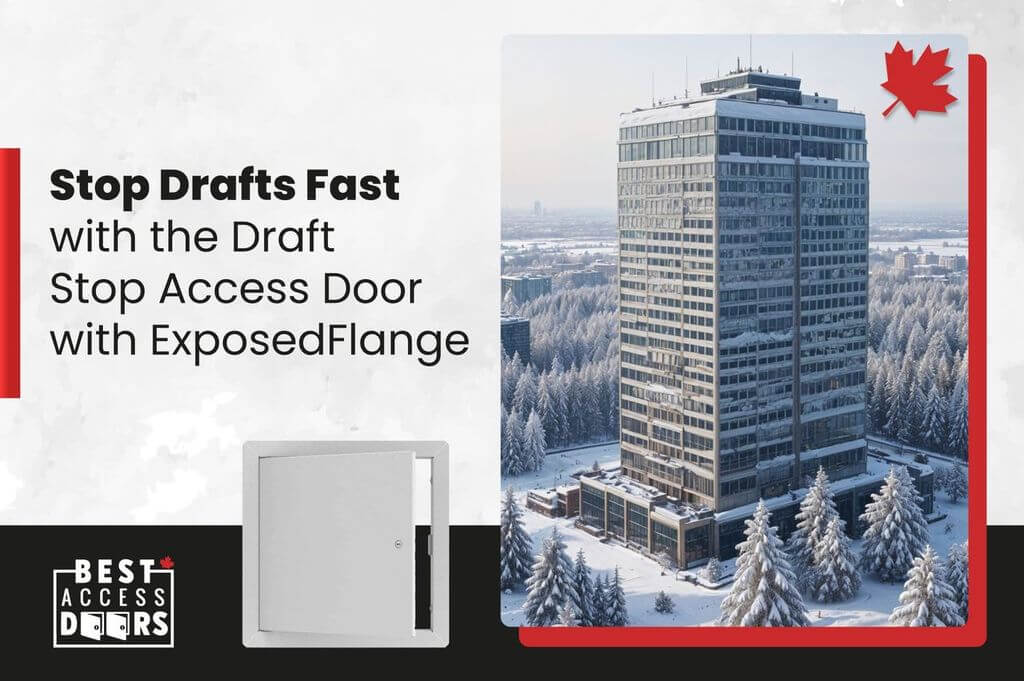How Can a Smoke Vent Improve Elevator Shaft Safety? Posted by Best Access Doors Canada on 3rd Jul 2024
Smoke accumulation in elevator shafts in high-rise structures reduces air quality, making it challenging to evacuate lower floors. Fortunately, smoke vents can help mitigate these hazards.
Understanding the challenges of smoke accumulation and the benefits of smoke vents enables construction professionals, architects, engineers, and building safety inspectors to make informed decisions prioritizing occupant safety during fire emergencies.
Risks of Smoke Accumulation in Elevator Shafts
In a high-rise building, elevator shafts create a stack effect that draws smoke and heat upwards during a fire. This smoke can fill the entire shaft, originating from lower floors. It can pose a significant threat to building occupants on lower floors as they try to escape when encountering a smoke-filled elevator shaft, hindering their evacuation and reducing visibility.
Inhaling thick smoke can lead to disorientation, confusion, breathing difficulties, unconsciousness, and a severe risk of escape attempts and immediate safety. Moreover, trapped heat within the elevator shaft can lead to a flashover event, resulting in a rapid and explosive fire spread. Smoke vents mitigate the risk of heat buildup in elevator shafts by releasing accumulated heat, preventing the fire from spreading.
How Smoke Vents Improve Elevator Shaft Safety
Smoke vents protect people from smoke accumulation in elevator shafts during fires. They are placed openings in the roof or upper wall of the elevator shaft, activated through heat triggers or manual controls, allowing smoke and hot gases to escape outside the building. This enhances visibility within the elevator shaft, allowing firefighters to locate the fire's origin and navigate the shaft for rescue efforts.
By providing visibility in the elevator shaft, smoke vents also help occupants assess smoke levels and choose safer evacuation routes, improving safety during evacuations from lower floors.
Elevator shafts without vents behave like chimneys, directing smoke upward and causing distress to occupants. By releasing smoke and heat, smoke vents prevent the shaft from turning into a pressurized column of smoke, making it safer for all building occupants to evacuate.
A well-designed smoke vent, like the BAC-ASV Single Leaf Aluminum Smoke Vent, is essential for reducing smoke accumulation in elevator shafts, enhancing building safety, and preserving lives. It offers superior performance, efficient smoke shaft ventilation, and durable construction. It is tested to meet the strictest building codes and safety standards.
The BAC-ASV Single Leaf Aluminum Smoke Vent features:
- Superior smoke and heat exhaust: The BAC-ASV's efficient single-leaf design ensures clear escape routes and optimal ventilation during fire emergencies.
- Robust Construction: Crafted from strong, corrosion-resistant aluminum and stainless-steel hardware, the BAC-ASV withstands even the harshest environments for long-lasting dependability.
- Automatic Operation with U.L. Listed Fusible Link: Experience peace of mind knowing the BAC-ASV automatically activates in emergencies, thanks to its U.L. listed fusible link, ensuring immediate smoke venting.
Compliance with Building Codes and Safety Standards
Building codes and safety standards, such as the International Building Code (IBC), play a crucial role in guaranteeing occupant safety during fires by establishing specific requirements for fire safety measures. The IBC mandates smoke vents in particular circumstances, like elevator shafts exceeding a certain height or floor count. It outlines specific design, activation, and performance requirements.
Size and location are based on the elevator shaft's cross-sectional area, with strategic placement often at the top of the shaft or along the upper wall. Compliance with these regulations ensures occupant safety through a well-operating smoke vent system. It minimizes delays in building inspections and approvals, promoting building safety.
Key Considerations for Construction and Design Professionals
Building codes offer a framework for smoke vents in elevator shafts. Still, construction professionals and building designers must understand options and ongoing maintenance requirements and adhere to building codes. Failure to maintain these vents can impact their operation, highlighting the critical need for building safety inspectors to conduct regular checks to ensure proper functioning.
Integrating smoke vents with the building's fire alarm system allows for automatic activation upon fire detection, eliminating the need for manual input and facilitating a rapid response to fire emergencies. This collaborative approach ensures the effective operation of smoke vents during crucial moments, which is vital in saving lives during fire emergencies. Building safety inspectors play a pivotal role in ensuring compliance with building codes, assessing the functionality of smoke vents, and maintaining safety through regular and thorough inspections.
To Wrap Up
Smoke vents help decrease the amount of smoke in elevator shafts. They improve firefighters' visibility, ease safer evacuations, and save lives. However, their effectiveness relies on a collaborative approach that prioritizes building code compliance, qualified professionals, and proper installation and maintenance.
Building safety inspectors play a vital role in providing continuous code compliance and the functionality of smoke vents through regular checks. This collaborative approach fosters shared responsibility and confidence in the building's safety systems.
Ensure the safety of your building's occupants. Our team is here to answer your questions and guide you towards the perfect access solution. Connect with us to request a quote or call (800) 483-0823.





